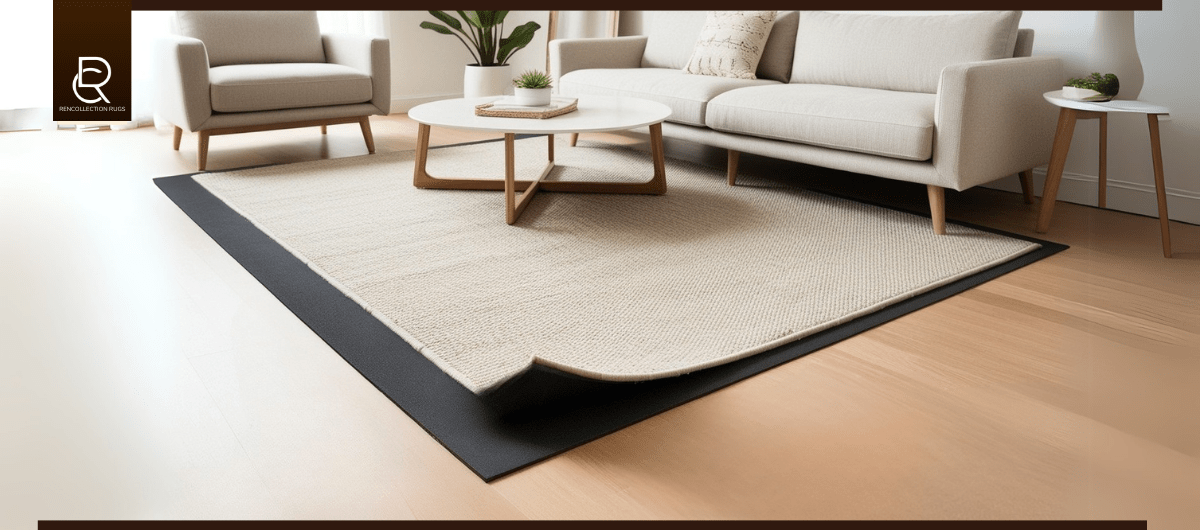Offer
Provide additional details about the offer you're running.

An area rug can change any space while bringing warmth, texture, and stylish design. When your rug moves excessively, it creates dangers for people and becomes an ongoing nuisance. The quick and damaging solutions for area rugs should be avoided, yet you can implement secure methods to keep your rug stable without floor damage. This guide teaches you an effective technique to fix your area rug in place without harming your flooring surfaces.
A high-quality rug pad is the top strategy for stopping rugs from moving on floors. These pads not only provide grip and cushioned surfaces but also ensure the safety of your floors. It's essential to select a rug pad that is compatible with both your floor and rug material.
When choosing a rug pad, consider the material of your floor and rug. For instance, natural Rubber Pads provide ideal flooring attachment for hardwood, laminate surfaces, and tiles while maintaining their grip and preventing sticky residue from forming. This understanding will help you make an informed decision and ensure the rug pad is compatible with your specific flooring and rug.
Felt and Rubber combination pads excel at grip and cushioning purposes; thus, they are ideal for stabilizing larger rugs. Synthetic or PVC pads are affordable, yet they offer limited durability and safety when used on different floor types.
You can easily find rug tape that provides an inexpensive solution. Look for products that carry hardwood laminate safety certification stickers, such as [specific brand or type of sticker]. These stickers indicate that the tape is suitable for hardwood and laminate floors. A thorough cleaning and floor drying will optimize the tape's bond strength before application.
To achieve a long-lasting floor grip without damage, a tiny strip of silicone caulk must be applied to the rug edges and central areas on its bottom side. This process involves [specific steps or techniques for applying silicone caulk]. The drying process must be completed before returning the rug to its original position.
The heavy-duty Velcro strips effectively secure rugs against movement, mainly when heavy foot traffic is on the floor. The floor receives a Velcro attachment on one end, while the rug connects to the other end of the Velcro strip. The Velcro you select must avoid harming the surface on removal.
Simple rug anchorage can be achieved when you place furniture across the rug area to distribute weight. Rugs of suitable size can be stabilized by laying down sofa furniture, coffee tables, or chairs on top of them without requiring adhesive materials.
The movement tendency of rugs increases as the weight decreases. If you still need one, a thick, denser rug should be a selection because thicker rugs naturally stay rooted in place better.
Rugs become inclined to slide more when covered with dust and grime, and liquid moisture accumulates. Both cleaning operations on rugs and floor surfaces help build enhanced traction and reduce unstable rug movements.
Area rug slippage can be prevented without damaging floor materials. Many protected anti-slip measures exist, including premium rug pads, rubber tape, and silicone-based caulk. Choosing an appropriate approach will give you a secure, stylish rug without slipping in your home.
Enjoy an exclusive 5% discount on your first order as a warm welcome from us. Add beauty and comfort to your home—shop now and save!